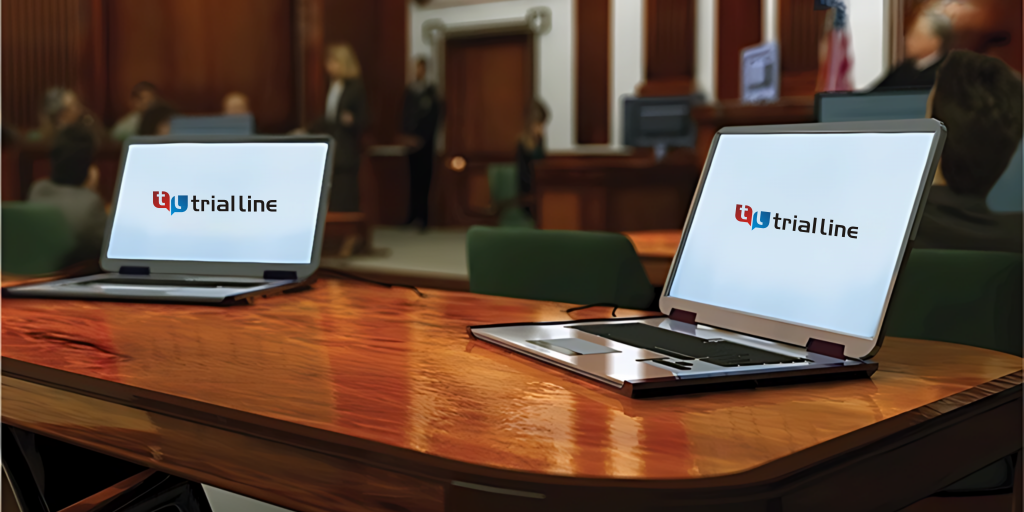Effective advocacy often depends on well-prepared trial presentations for clear evidence display.
Effective advocacy often depends on well-prepared trial presentations for clear evidence display.
Blog Article
Exactly How Test Presentations Enhance Your Disagreement and Convince Jurors
Test presentations act as an essential system for improving legal disagreements and persuading jurors. By integrating visual help, narrative frameworks, and emotional engagement, attorneys can develop an engaging situation that resonates on numerous degrees. The tactical usage of visuals not just clears up complicated details but likewise captures jurors' interest better than words alone. The art of narration plays a similarly important duty in transforming factual evidence into a compelling story, shaping jurors' perceptions. Recognizing these aspects can considerably impact test results, raising the concern of how each part adds to this elaborate dynamic.

Importance of Aesthetic Aids
Visual help play a critical function in improving the effectiveness of test presentations, as they can significantly increase target market engagement and retention of information. In the context of a test, where jurors are charged with processing complicated details, visual aids offer to simplify and clarify crucial factors. Graphes, charts, and pictures can convey information and principles that may otherwise bewilder or puzzle jurors, permitting for a more simple understanding of the evidence provided.
Furthermore, visual aids help in preserving juror interest throughout the process. By damaging the monotony of verbal statement, these devices can punctuate vital arguments, making them extra unforgettable. Effective visual aids can additionally evoke emotional reactions, which can be essential in encouraging jurors to align with the presenter's narrative.

Crafting Engaging Narratives
An engaging narrative is vital in test discussions, as it serves as the backbone of effective persuasion. It allows attorneys to weave together realities, evidence, and psychological components right into a coherent tale that reverberates with jurors. This narrative framework makes it possible for jurors to comprehend the intricacies of the case while assisting them via the lawyer's argument.
To craft a compelling story, lawyers must concentrate on clearness and coherence. This includes establishing a clear lead character-- often the client-- and describing their trip via the events in question. Providing the realities in a sensible series enhances comprehension and keeps involvement. Additionally, the usage of brilliant descriptions can produce psychological pictures that assist jurors visualize the events, making the story extra memorable.
Additionally, incorporating key styles throughout the discussion reinforces the core message and view it help in retention - trial presentations. The narrative needs to not just communicate information but likewise stimulate a feeling of justice, highlighting the stakes involved. Inevitably, a sound narrative fosters a connection in between the jurors and the situation, positioning the attorney's argument as both credible and compelling, thereby increasing the possibility of a favorable verdict

Involving the Jury Mentally
Efficient court engagement hinges on the lawyer's ability to attach with jurors on an emotional degree. This connection can substantially impact jurors' assumptions Home Page and their utmost decision-making. Using psychological appeals allows lawyers to humanize the instance, changing abstract lawful principles right into relatable experiences. By offering real-life stories or testimonials, attorneys can evoke empathy and concern, cultivating a much deeper understanding of the concerns at stake.
Visual aids, such as photos or videos, can even more improve psychological engagement, giving jurors with brilliant depictions of the situation's human components. Crafting a story that highlights the battles and accomplishments of the people entailed ensures that jurors see beyond the legal debates and identify the human repercussions of their decisions.
An attorney's enthusiastic delivery can resonate with jurors, reinforcing their psychological investment in the case. It's important to balance psychological appeals with accurate evidence, making sure that jurors really feel forced to act while continuing to be grounded in the fact.
Structuring Your Discussion

The body of the presentation ought to be practically segmented into bottom lines, each sustained by engaging evidence. It is useful to make use of storytelling strategies to weave realities right into a story that jurors can easily adhere to. Visual aids, such as charts and videos, can her explanation boost understanding and engagement, aiding to highlight crucial items of evidence.
Real-World Study
Checking out real-world instance studies offers invaluable insights into the art of test discussions and persuasion. For example, the spots case of "O.J. Simpson v. The People of California" shows just how aesthetic aids and engaging stories can guide court perceptions. The protection group properly utilized a strategy that incorporated top-level professional testimonies with multimedia discussions, which captivated jurors and inevitably influenced their choice.
One more noteworthy instance is the "McDonald's Coffee Instance," where the complainant's lawyers used graphic photos of the injuries suffered by Stella Liebeck. trial presentations. This stark aesthetic evidence played a critical function in sharing the seriousness of her burns, bring about a significant court award. Such cases demonstrate that impactful trial discussions frequently pivot on the reliable combination of visuals and storytelling to evoke emotional actions from jurors
In addition, the "Casey Anthony Trial" highlighted the value of narrative coherence and integrity. The prosecution's failing to establish an engaging timeline lessened their convincing power, underscoring the requirement of a well-structured discussion. Evaluating these cases reveals that successful test discussions call for tactical preparation, emotional interaction, and the ability to reverberate with jurors' worths and ideas.
Final Thought
Test presentations substantially boost disagreements and encourage jurors through the calculated usage of visual help, engaging stories, and emotional interaction. A well-structured presentation equilibriums emotional allures with factual evidence, eventually reverberating with jurors' worths.
Report this page